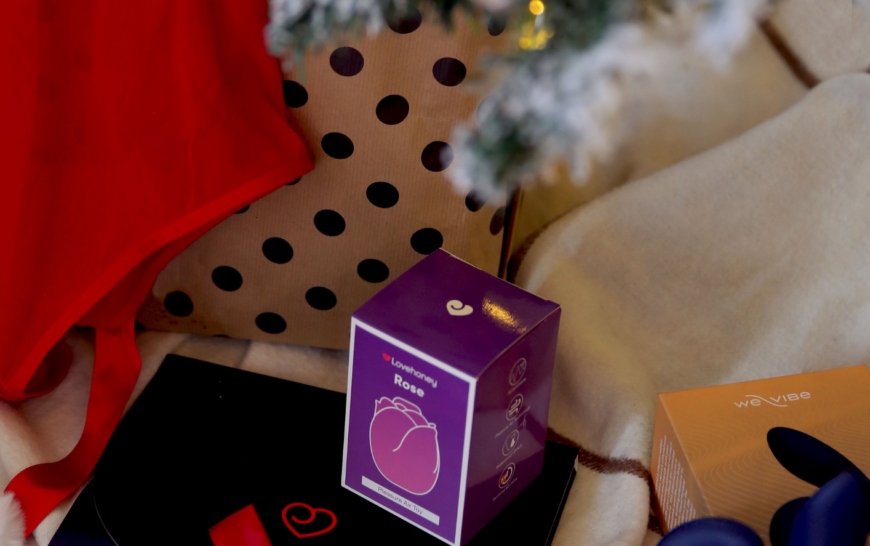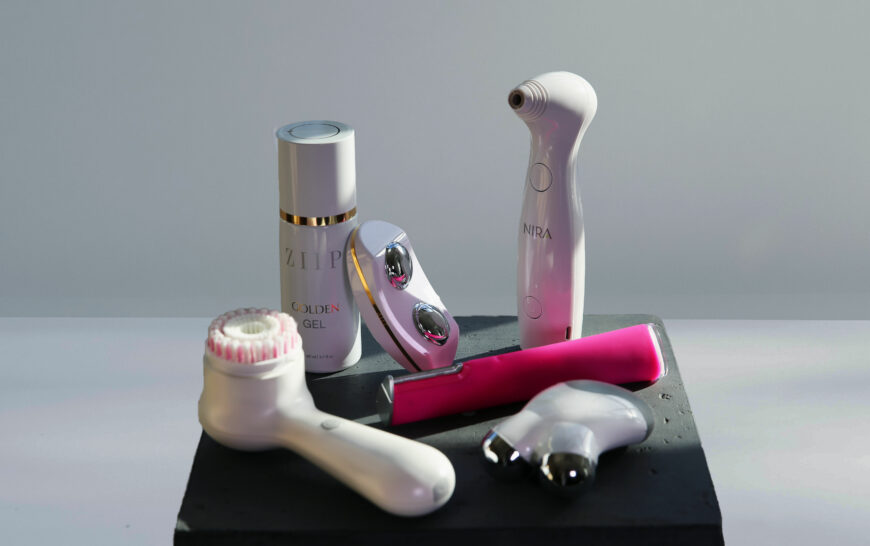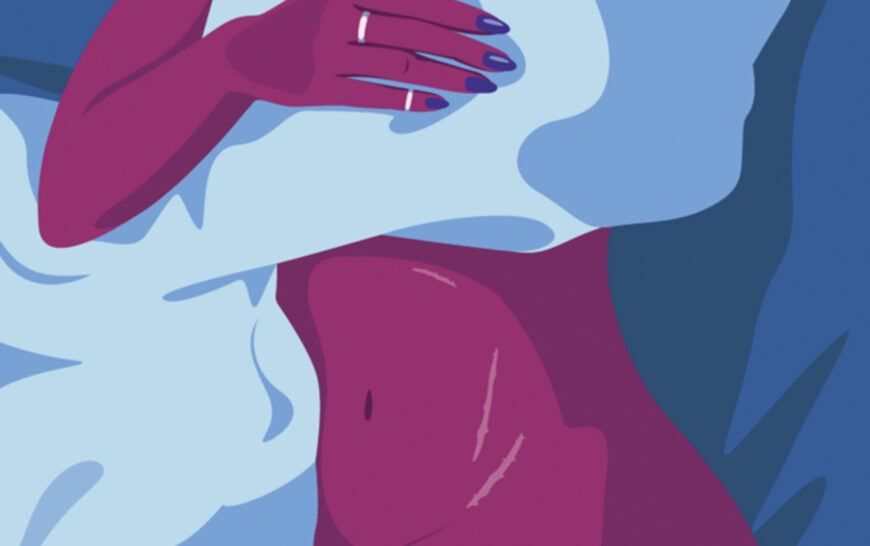
This is an article from School of Squirt, for content pitches please email contact@zoella.co.uk
There are many questions around the topic of squirting. For example: What is squirting? Can everyone squirt? How do I make squirt?
But perhaps one of the most asked questions on the topic, and one of the most controversial, is: “Is squirting real?” You’ll be glad to know that squirting is very real and, for many, it’s very possible to achieve.
Are you ready to learn more about squirting? Then keep reading!
What is Squirting?
In technical terms, squirting is defined as “the discharge of a noticeable amount of fluid from the urethra.” This occurs after a variable time of sexual stimulation, and it’s often linked to g-spot stimulation.
Is Squirting Real?
The short answer? Yes.
Now for the long answer: Squirting is a real, scientifically confirmed phenomena. It occurs when a gush of liquid flows from the urethra during sexual excitation, and it may or may not occur at the same time as an orgasm.
The confusion doesn’t seem to be around whether squirting is real or not. Instead, it seems to be based around the definition of squirting and exactly what squirting is. For years, it’s been believed that the fluid associated with squirting is urine. That is, someone who squirts is actually urinating during sexual stimulation.
A particular protein which is associated with male ejaculation, Prostate-specific antigen (PSA), is also found in the fluid produced from squirting.
The real composition of squirting fluid is more complicated than that, however. It’s true that the fluid associated with squirting does come from the bladder. In addition, it contains urea, creatinine, and uric acid, all of which are found in urine. But that’s not the only thing found in the fluids. In fact, a particular protein which is associated with male ejaculation, Prostate-specific antigen (PSA), is also found in the fluid produced from squirting.
This protein is believed to come not from the urethra, but from the Skene’s gland. The Skene’s gland (or more accurately, Skene’s glands) are glands located on the anterior wall of the vagina, near the base of the urethra’s opening. It’s believed that the Skene’s gland releases its own fluids at the same time as the bladder. This is what marks the difference between someone urinating vs squirting.
Myths Associated with Squirting
There are a lot of misconceptions about squirting, especially due to how it’s portrayed in pornography. But we’re here to clear up the confusion!
Myth #1: Squirting is Fake
Covered briefly above in the section on “Is Squirting Real?” But there’s no doubt that this myth requires further discussion. The most common association that many have with squirting is what they’ve seen in pornography. Just as with anything else portrayed in pornography, though, squirting is dramatized.
In pornography, they often have torrential, gushing that seems to go on forever. They will also often convey the fact that they’re having an intense orgasm at the same time.
It helps if you think of squirting in pornography the same way you think of orgasms. You know orgasms are real, but they’re overplayed.
It’s true that the amount of squirting which happens will vary from person to person, and even from session to session. But let’s get one thing clear: The squirting that’s portrayed in pornography is often far from reality. It helps if you think of squirting in pornography the same way you think of orgasms. You know orgasms are real, but they’re overplayed. The same can be said for squirting, but this shouldn’t discourage you from it.
Myth #2: Only a “certain type” of person can squirt
It’s true that pornography has seriously altered the way we view sex. A particular way in which it is done so is by portraying a certain image of a person who can squirt.
Squirting is often thought to be a rare phenomena, and one that only ‘experienced’ people can achieve. The truth is that just about anyone can squirt under the right circumstances.
Myth #3: Squirting = Orgasm
It’s commonly thought that squirting = orgasm. But as many squirters will tell you, that’s not always the case.
Is it possible to squirt and orgasm simultaneously? Of course! It’s not a requirement that you orgasm at the same time as you squirt, however. In fact, many people can squirt multiple times before they reach climax.
There are things you can do to increase the chances of having a squirting orgasm, though it’s never guaranteed. A few tips include:
- Stimulating the clitoris
- Practice edging
- Use a sex toy
Myth #4: Squirting can only occur with g-spot stimulation
There’s no doubt that for many g-spot stimulation is the easiest way to squirt. It’s not the only way, however. The g-spot is the fleshy nub located towards the opening of the vagina. When you are aroused, the g-spot will fill with blood and seemingly grow larger.
Why? Because the g-spot is actually thought to be an extension of the clitoris.
When we speak of the clitoris, we’re referring to the small, spongy structure at the top of the vulva. This is only just a small part of the clitoris, though, as the majority of it is internal. In some cases, you may even be able to squirt with nipple stimulation or anal intercourse.
How to Make Yourself Squirt
Are you interested in learning how to squirt on your own? Then you’ve come to the right place!
Try and relax
It’s easy to become distracted by your usual day-to-day responsibilities. But for a successful squirting session, you’ll need to shut off your racing mind and embrace the calm.
What this looks like, and how it’s done, will vary from woman to woman. A few tips you may want to try:
- Take a few deep breaths. While lying down comfortably, breathe in for seven seconds. Hold your breath for four seconds, and then slowly exhale for eight seconds. This pattern of breathing is intentional, which means you’ll have to steady your mind to focus.
- Play a lowkey playlist. When you need to calm your thoughts and clear your mind from all other outside distractions, music can help. Just put your favorite playlist on repeat.
- Practice aromatherapy. Lavender and vanilla are popular choices when it comes to aromatherapy blends. You can diffuse them, or even just use a scented plug-in or room spray.
Only once you’ve brought yourself to a more relaxed state are you ready to move on.
Explore Yourself Freely
Take the time to explore yourself freely. This means touching your most sensitive spots and finding what you like and what you don’t like.
Are you not sure how to start? Why not begin with the erogenous zones? These include:
- Lips
- Ears
- Neck
- Lower back/buttocks
- Breasts
- Inner thighs
- Clitoris
It may feel weird at first as you explore your body. This is especially true for spots you might not otherwise think of as erotic (like your ears and neck). But by taking the time to acquaint yourself with your body, you set yourself up for success.
Find the Sweet Spot
When it comes to squirting, focus on two key areas: the clitoris, and the g-spot. The clitoris is easy enough to locate, but what about the g-spot? That can be a bit trickier.
One tip for making your exploration easier? Wait until you’re fully aroused. The g-spot engorges when you’re aroused, so this will make it much easier to find. Once you’ve found your g-spot, you can begin to learn what you like. Stimulate it with your fingers by making a ‘come hither’ motion. Or use a vibrator or dildo.
Don’t Stop!
The majority of squirting fluids come from the bladder, so it can feel as if you urgently need to pee when you’re close to squirting. This is because the bladder fills up when it’s sent signals from the Skene’s gland that you’re close to ejaculation.
The good news? It’s not urine. So if you feel like you’re on the verge of peeing, keep going. Just be sure to empty your bladder right before your session and you should be good to go!
Practice Makes Perfect
It’s not uncommon to require multiple sessions before you’re finally able to squirt. And that’s okay. The more you practice, the ‘better’ and more comfortable you’ll get. This is because you’ll become more attuned with your body. This also means that, should you ever want to squirt with your partner, you’ll be better able to guide them.
Frequently Asked Questions About Squirting
While we’ve covered some of the common myths about squirting, there are still a lot of questions on the topic. Let’s tackle a few of those FAQs now.
Can Everyone Squirt?
The quick answer to whether all women are physically able to squirt is yes. The answer is a bit more complicated than just having the right physical parts, though.
Whether one can squirt or not is about more than just your ability to do so. If you’re not in the right mental space, then it’s unlikely to happen.
Why Does it Feel Like I Need to Pee?
A common concern of people who are just about to squirt, and the reason that many hold back, is the intense feeling of needing to pee. The good news? Squirting is not urination (though a small bit of diluted pee may be mixed in from time to time). So the next time you feel like you need to dash off in the middle of your lovemaking session, just let go.
Can I Get ‘Better’ At Squirting?
Kegel exercises may be the answer. Kegel exercises are exercises that strengthen the pelvic floor muscles. With stronger pelvic muscles, you may be able to control your ability to climax and to squirt. In fact, a strong pelvic floor can even mean more intense orgasms.
Squirting Troubleshooting
Let’s look at some common issues you may be experiencing and how you can overcome them.
I Don’t Enjoy G-spot Stimulation…
For many, g-spot stimulation can feel odd at first. After all, it’s an often overlooked spot. And while many will come to love g-spot stimulation, still others may continue to feel odd about it.
The good news is, g-spot stimulation isn’t necessarily required for squirting. It may be easier for most to squirt from direct stimulation of the g-spot, but it’s also possible via other avenues.
Remember that the g-spot is an inner extension of the clitoris. As such, it may be possible to squirt from clitoral stimulation.
I Cannot Overcome My Fear of Peeing
It’s true that, as you near the verge of squirting, you may feel an intense urge to urinate. This can cause a significant mental block for some as they fear “letting go.”
What can you do?
- Move to the bathroom. The shower or bathtub is a great place to get used to squirting if your greatest hangup is the potential mess. This is especially true if you fear that you’ll pee instead of squirt.
- Prepare your environment. Does the bathroom sound unappealing? Then maybe you would be more comfortable with the idea of squirting if you first ‘prepared’ the environment. Put down some towels, and remove anything that may be harmed from getting wet.
The most important thing you can do? Be patient. It may take you several sessions to finally let go, and that’s okay.
It Takes Me a Long Time to Squirt
Patience is key when it comes to trying to squirt, especially if it’s your first time. However, you may feel self-conscious about how long it takes her to finally get there.
There are steps you can take to hasten the process, though there’s no guarantee. Everyone is different so it may just be that you take longer than most.
Anyway, on to the tips!
- Practise kegels. One thing you can do to improve your chances (and speed) of squirting is kegel exercises. These exercises strengthen the pelvic floor muscles. They can be done anywhere, anytime.
- Try new positions. Perhaps your current positions aren’t hitting your g-spot at just the right angle. That’s okay because there’s plenty more to try!
- Go back to the basics. A common issue, and one that’s easy to resolve, is that your foreplay and warm-up sessions just aren’t as long as they should be. So go back to the basics and take it slow.
To reiterate what we’ve stated throughout the article: Squirting is real and possible for most to achieve!









